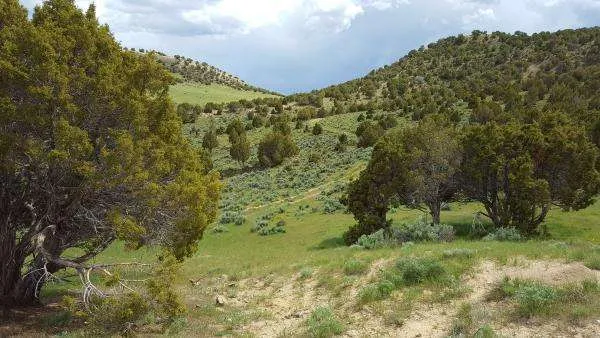K-State’s Upham outlines controls for volunteer trees
MANHATTAN, Kan. – Ward Upham has trees on his mind these days, but not necessarily the Christmas variety. And it’s possible many homeowners should, too.
Upham, a horticulture expert at Kansas State University, said that although trees are a vital part of landscapes, there are situations where volunteer trees – saplings that come up from seeds by themselves in yards and gardens – need to be controlled.
“This is often the case of having the wrong plant in the wrong place,” Upham said. “If the tree is small and a desirable species, you may want to consider leaving it alone and transplanting it in the spring. But if not, then active control measures would be in order right now.”
Upham said cutting trees can be effective for those that do not resprout, such as the eastern redcedar. However, many other varieties resprout after cutting, including the Siberian elm, hackberry, Osage orange (hedgeball), oak, ash, aspen, cottonwood, maple, sycamore, willow and others.
“These trees will either need to be dug out, or the cut stump should be treated with herbicide after you cut it,” Upham said.
He noted that triclopyr and glyphosate are the herbicides most commonly available to homeowners. “Triclopyr is found in many brush killers and glyphosate is found in Roundup, as well as numerous other products,” Upham said.
It’s important, he added, to read a product’s label before purchasing to make sure that it is appropriate for treating a cut stump. The product can be applied with a paint brush, ideally within five minutes after cutting the stump.
“Trees do not need to be actively growing to be controlled,” Upham said. “Actually, this time of year is a very good time to treat as long as applications are made when the temperature is above freezing.”
Upham and his colleagues in K-State’s Department of Horticulture and Natural Resources produce a weekly Horticulture Newsletter with tips for maintaining home landscapes. The newsletter is available to view online or can be delivered by email each week.
Interested persons can also send their garden- and yard-related questions to Upham at [email protected], or contact your local K-State Research and Extension office.
# # #
Sidebar
Watch for mice around fruit trees, plants
Kansas State University horticulture expert Ward Upham advises homeowners to be on the lookout for mouse tunnels around fruit trees and plants.
“Trunks and roots of apple trees are among the favorite meals for mice,” Upham said. “There is probably no damage yet, but if we receive enough snow to cover winter food supplies, mice will begin to feed on the lower area of tree trunks and roots.”
Mice hide in dead grass and weeds around trees, especially close to the trunks, he said. They will often tunnel near the soil’s surface and feed on tree bark.
“You can check for mice by placing baited mouse traps in PVC or other pipe near your trees,” Upham added. “Insert the traps far enough so that pets are unable to reach the trap. Check the stations once a week and reset traps if necessary.”
FOR PRINT PUBLICATIONS: Links used in this story
K-State Horticulture Newsletter, https://hnr.k-state.edu/extension/info-center/newsletters/index.html
K-State Research and Extension local offices, www.ksre.k-state.edu/about/stateandareamaps.html
K State Research and Extension is a short name for the Kansas State University Agricultural Experiment Station and Cooperative Extension Service, a program designed to generate and distribute useful knowledge for the well being of Kansans. Supported by county, state, federal and private funds, the program has county extension offices, experiment fields, area extension offices and regional research centers statewide. Its headquarters is on the K State campus in Manhattan. For more information, visit www.ksre.ksu.edu. K-State Research and Extension is an equal opportunity provider and employer.
Story by:
Pat Melgares
785-532-1160
[email protected]
For more information:
Ward Upham
785-532-6173
[email protected]





